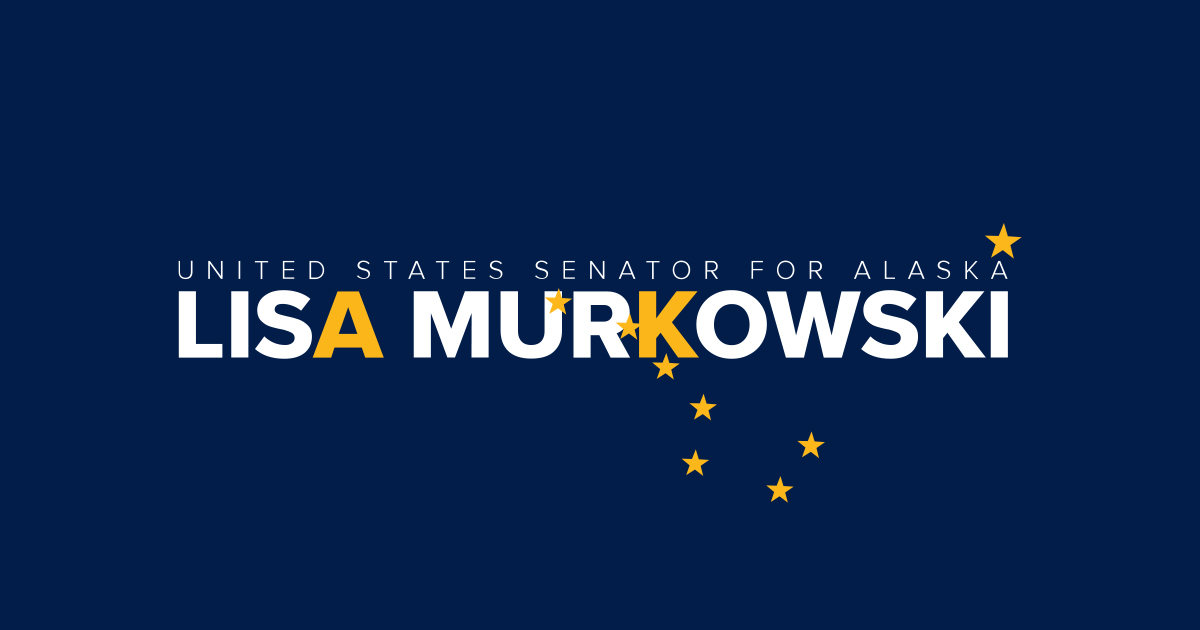Source: United States Senator for Alaska Lisa Murkowski
Ecosystems Provide Environmental Benefits, Sequester Atmospheric Carbon
Senate Oceans Caucus Co-Chairs U.S. Senators Lisa Murkowski (R-AK) and Sheldon Whitehouse (D-RI) reintroduced the Blue Carbon for Our Planet Act, legislation focused on conserving, restoring, and understanding coastal blue carbon ecosystems.
Blue carbon ecosystems—which include mangroves, tidal marshes, seagrasses, and kelp forests—provide a buffer from storm- or wave-driven coastal erosion, improve water quality, and serve as habitat for juvenile fish while also removing carbon from the ocean and atmosphere. The Blue Carbon for Our Planet Act addresses the need to more fully comprehend how these ecosystems help to mitigate climate change and its impacts, and how we can better leverage that capacity in the future.
“Blue carbon ecosystems have great potential to help mitigate the impacts of climate change in Alaska and elsewhere. By protecting our shorelines from coastal erosion, storing incredible amounts of carbon, and helping to address ocean acidification, these ecosystems are a significant asset in our efforts to protect the planet,” said Senator Murkowski. “Important research is taking place in Alaska to better understand the potential for carbon storage in kelp forests and wetlands, and this bill will strengthen our ability to better understand how to safeguard them.”
Listen here for Senator Murkowski’s quote.
“From Rhode Island to Alaska, our oceans are in trouble. The coastal wetlands that make up the first line of defense against climate change are rapidly disappearing,” said Senator Whitehouse. “Our bipartisan bill would help preserve the tidal marshes, mangroves, seagrasses, and kelp forests that provide a natural buffer to rising seas and absorb vast amounts of carbon dioxide from the atmosphere.”
The Blue Carbon for Our Planet Act would:
- Establish an Interagency Working Group on Coastal Blue Carbon, under the National Science and Technology Council’s Subcommittee on Ocean Science and Technology, to guide the bill’s overarching initiatives. The Interagency Working Group would be chaired by the National Oceanic and Atmospheric Administration (NOAA) Administrator.
- Direct the Interagency Working Group to coordinate the development and maintenance of a national map of coastal blue carbon ecosystems and their characteristics, including carbon sequestration potential and net greenhouse gas reductions; establish restoration priorities for these ecosystems and assess impediments to their restoration; develop a national strategy for studying the effects of climate change and human and environmental stressors on coastal blue carbon sequestration rates; and secure the continuity and use of all related data assets.
- Require the Interagency Working Group to submit a report to Congress summarizing federally funded coastal blue carbon ecosystem research, monitoring, preservation, and restoration activities.
- Require the Interagency Working Group to create, and revise every five years, a strategic plan for federal investments in basic research, development, demonstration long-term monitoring and stewardship, and deployment of coastal blue carbon projects.
- Direct the NOAA Administrator to partner with State, local, and Tribal governments and coastal stakeholders to develop pilot programs to restore degraded coastal blue carbon ecosystems in geographically, socioeconomically, and ecologically diverse locations where restoration could yield significant ecosystem, social, coastal protection, and carbon sequestration benefits.
- Direct the Secretary of the Smithsonian Institution to provide for the long-term use of—and incorporation of global and national data assets into—the Coastal Carbon Data Clearinghouse, an existing repository of coastal carbon data housed under the Smithsonian’s Environmental Research Center.
- Instruct the NOAA Administrator to enter into an agreement with the National Academy of Sciences to assess the effects of, and existing technologies for, carbon dioxide storage in the deep seafloor environment; methods and technologies for removal of dissolved carbon dioxide from the ocean; and the feasibility of the use of coastal macroalgae cultivation and sustainable wetland management and restoration for carbon sequestration.
- Authorize $15 million to be appropriated to the NOAA Administrator for each of fiscal years 2022 through 2026 to support its initiatives.
The Blue Carbon for Our Planet Act does not provide new authority for the President or any member of the administration to withdraw federal lands or waters.
